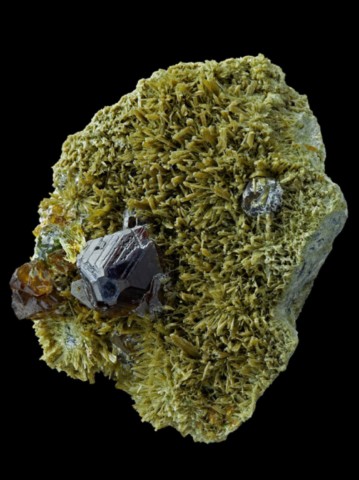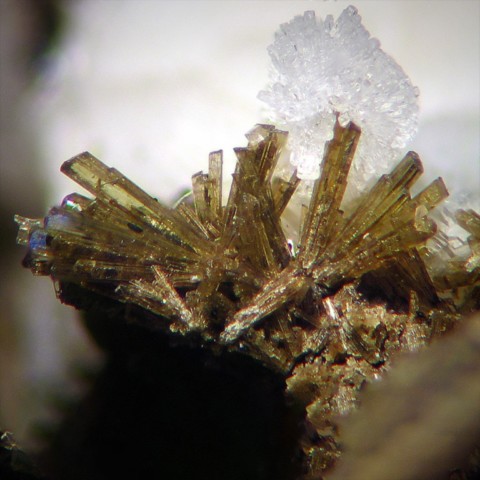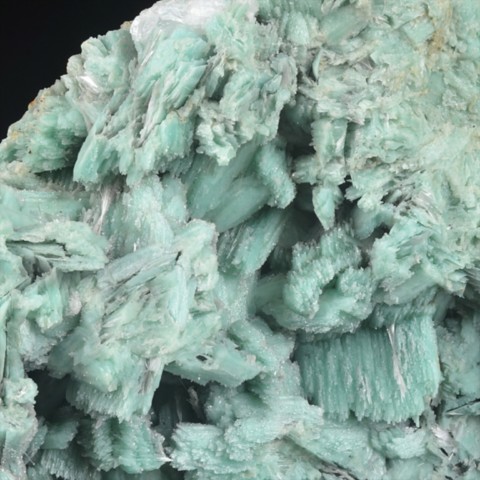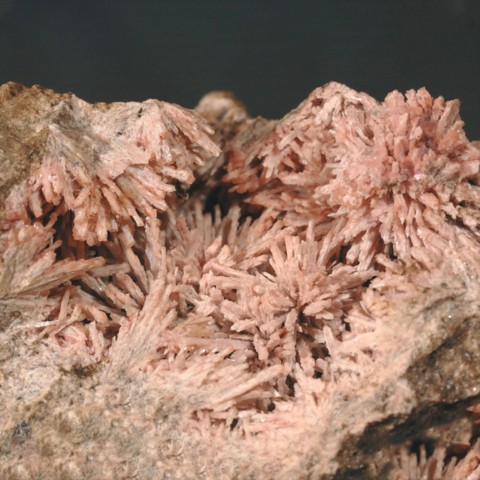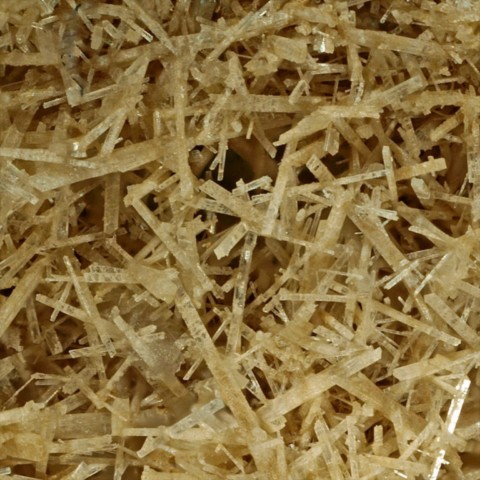JOHANNSENITE
Class : Silicates
Subclass : Inosilicates
Crystal system : Monoclinic
Chemistry : CaMnSi2O6
Rarity : Quite common
Johannsenite is a manganese clinopyroxene which forms two series, with diopside on the one hand and with hedenbergite on the other. It is found in limestones which have undergone contact metamorphism with metasomatosis and which are therefore transformed into skarns. It accompanies other manganese silicates (bustamite, rhodonite) and frequent sulphides. It was named in honor of Albert Johannsen, American petrographer and geologist, Professor at the University of Chicago. Johannsenite forms fibrous crystals which are usually grouped into fibroradiated spherolites or radiated aggregates ; they can reach 10 cm. Their green-black or brown color is often blackened by a film of manganese oxides. Johannsenite also alters to rhodonite. It is a locally important manganese ore and it is occasionnally cut in cabochons.
Main photo : Johannsenite and sphalerite from Iron Cap Mine, Arizona, USA © Lawrence Violett
Johannesite in the World
Twinning
No twins known for this mineral species.
Fakes and treatments
No fakes recorded for this mineral species.
Hardness : 6
Density : 3.56
Fracture : Irregular
Streak : White
TP : Translucent
RI : 1.703 to 1.745
Birefringence : 0.029
Optical character : Biaxial +
Pleochroism : Low
Fluorescence : None
Solubility : Hydrochloric acid
Magnetism : NoneRadioactivity : None

